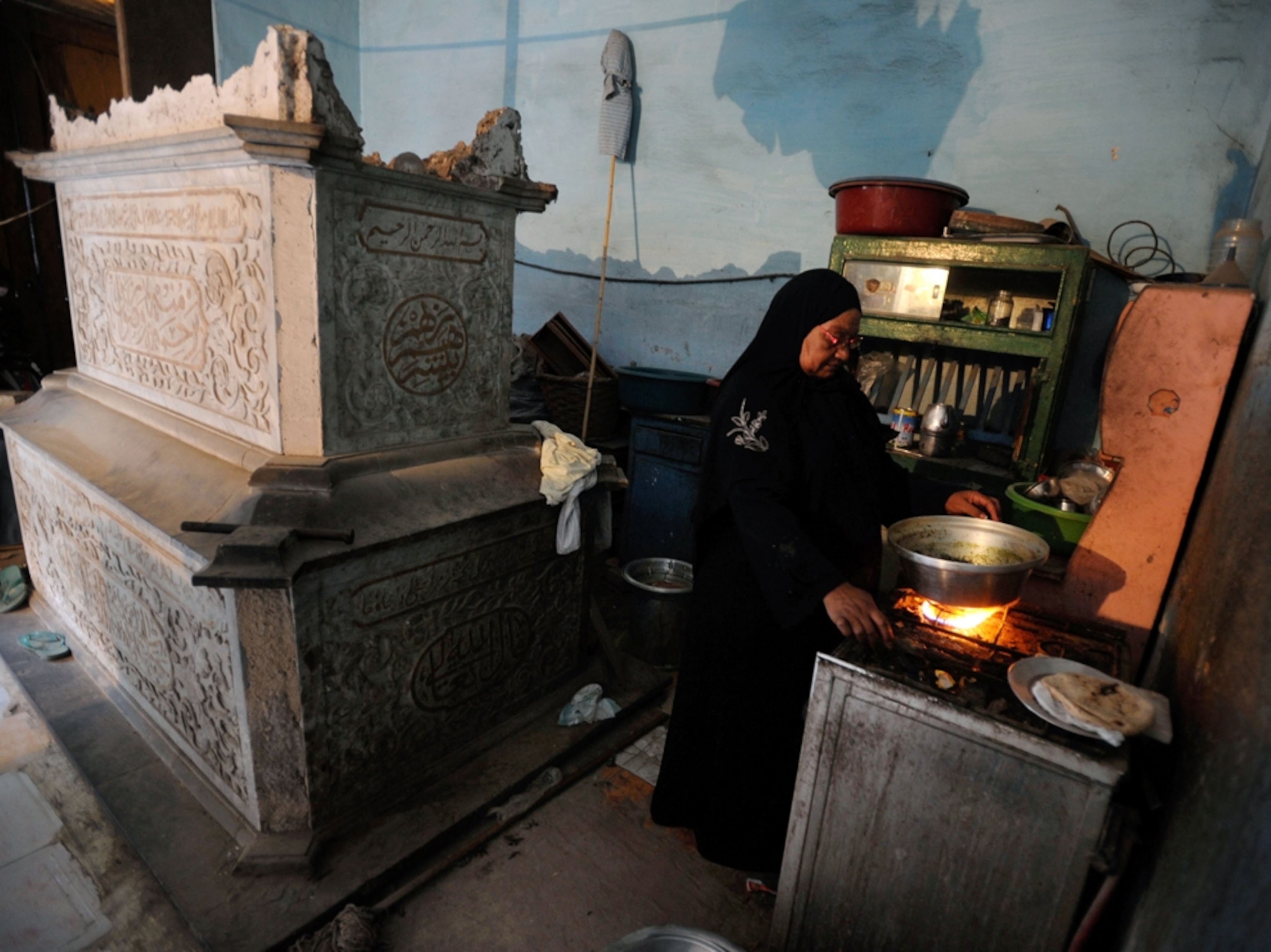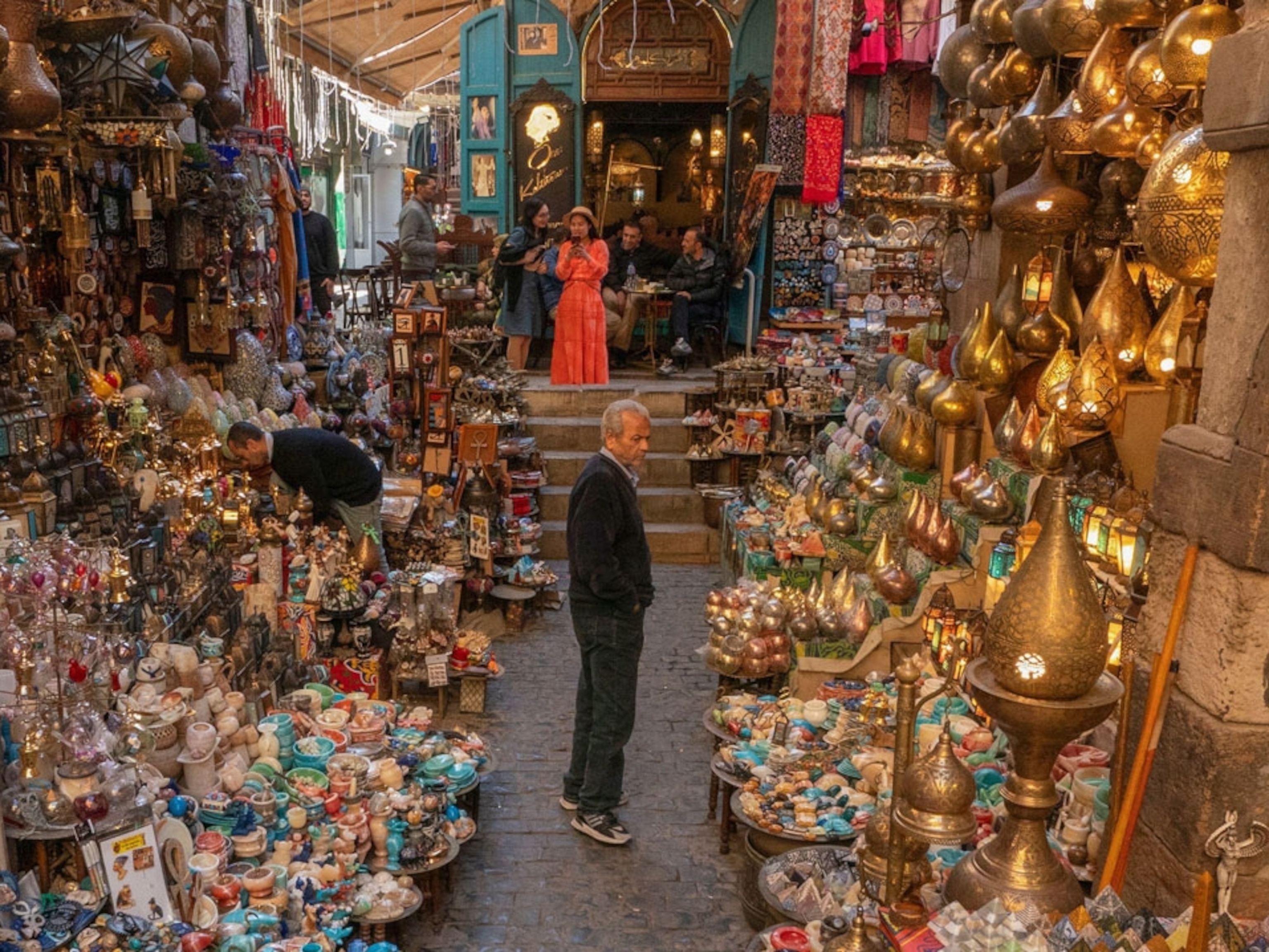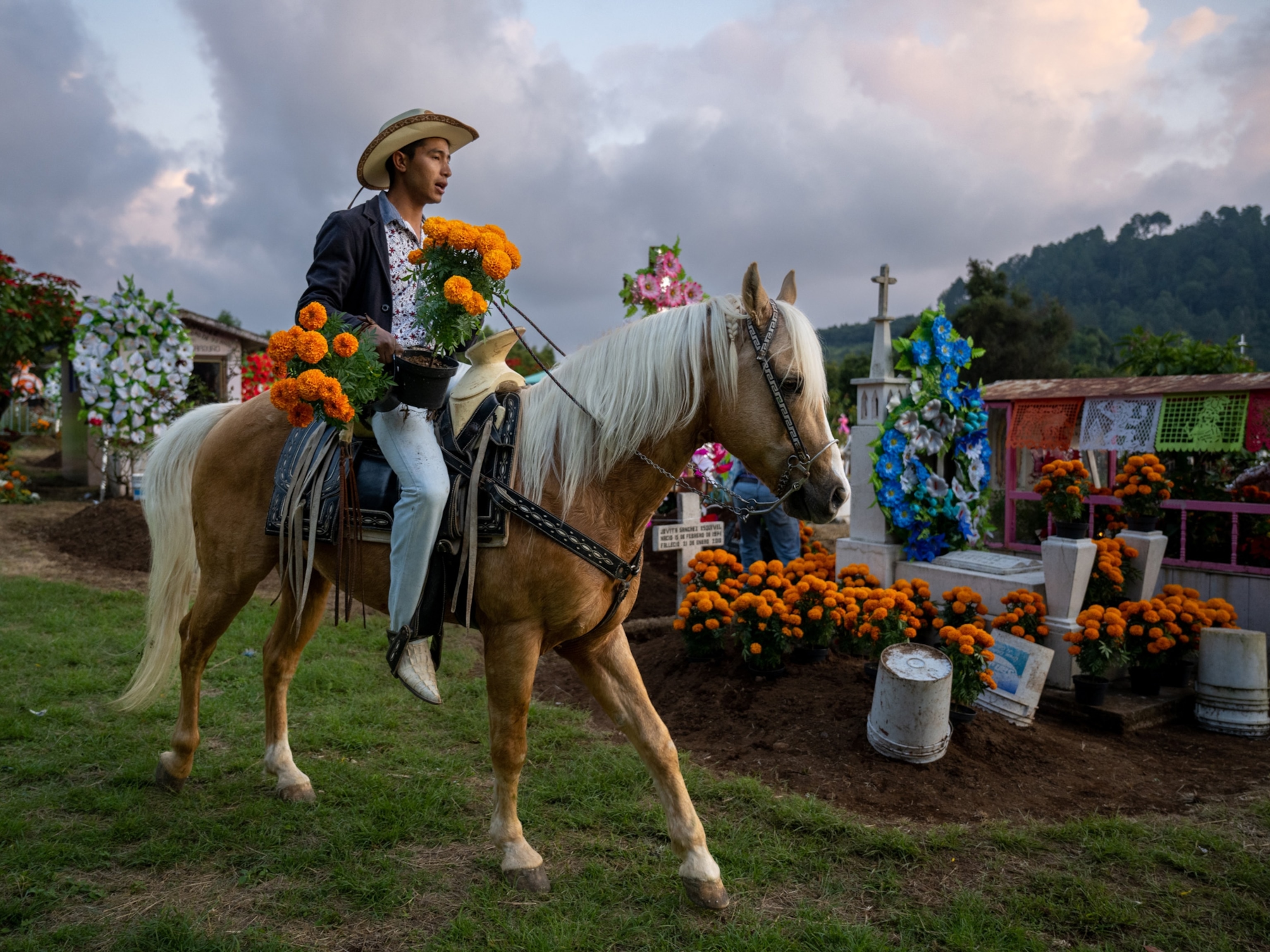
Cairo's City of the Dead
In this city of 18 million every inch of sidewalk feels crowded. The cars are bumper-to-bumper, madly honking, and the very idea of stillness seems alien. But in Cairo’s el-Arafa necropolis, known in English as the City of the Dead, the streets are quiet, narrow, and often unpaved, and they seem to wind forever, a world of crumbling high walls with ornate gates and domes and minarets.
The necropolis has been around for more than 700 years in a city so crowded that today tens of thousands live here among the tombs.
“I’ve lived here for 80 years,” said Abdul Aziz Sahel, “and my family has lived here for 350. King Farouk is buried near my house.”
No one is sure of the exact number of people living among the million or so tombs, each of which is a walled compound, some with buildings and fountains inside, others empty. All have two covered stairways, one for men and one for women, that lead to crypts holding the remains of extended families. Some tombs are crumbling; others are pristine and full of marble. There are regular houses of two and three stories next to tombs; others have squatters inside or are locked tight.
I found Sahel sitting at a worn wooden table on Sidianefisa Street in the shade of a eucalyptus tree. He was a distinguished gentleman in a blue overcoat and white skullcap. Crowds were still filling Tahrir Square downtown. The schools were closed and workers striking, but here was one of the few places politics hadn’t penetrated.
“Life here is peaceful,” he said. “Living with the dead is a good thing for an old person. They don’t talk, and they are very still.”
- National Geographic Expeditions





